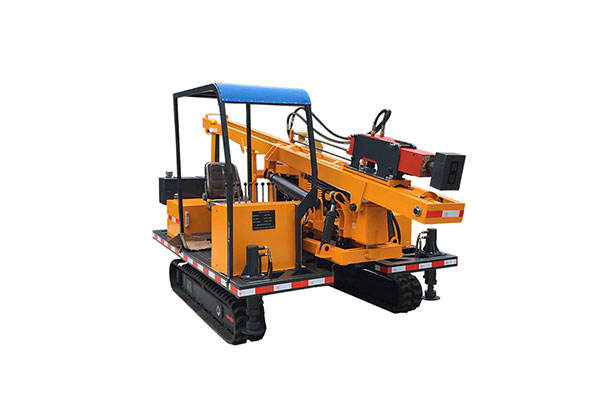Hydraulic Static Pile Driver: What You Need to Know
Hydraulic static pile drivers are heavy-duty machines used for pile driving in construction projects. They have gained popularity in recent years due to their efficiency, speed, and accuracy in driving piles.
What is a Hydraulic Static Pile Driver?
A hydraulic static pile driver is a machine that uses hydraulic pressure to drive piles into the ground. Unlike other pile driving methods that rely on a hammer or vibrator, hydraulic static pile drivers use a hydraulic clamp to hold the pile in place while hydraulic pressure is applied to the top of the pile. The pressure forces the pile into the ground, and the clamp keeps the pile steady during the process.

Benefits of Hydraulic Static Pile Drivers
- Speed and Efficiency: Hydraulic static pile drivers are known for their speed and efficiency. They can drive piles quickly, which means that construction projects can be completed faster. This is particularly important in areas where construction time is limited, such as in urban areas where road closures and disruptions are minimized.
- High Accuracy: Hydraulic static pile drivers offer high accuracy in pile driving. They are designed to deliver a consistent force on each pile, ensuring that the piles are driven to the correct depth and alignment. This accuracy is important because it helps prevent the need for pile correction, which can be time-consuming and expensive.
- Low Noise and Vibration Levels: Hydraulic static pile drivers generate low noise and vibration levels during the pile driving process. This makes them ideal for use in urban areas, where noise and vibrations can be a significant source of disruption to the surrounding community. The low noise and vibration levels also make them more environmentally friendly compared to other pile driving methods.
- Versatility: Hydraulic static pile drivers can be used for a wide range of pile sizes and types. They can drive piles up to 1200mm in diameter and up to 40 meters in length. They can also be used for different types of piles, including steel, concrete, and composite piles.
Working Principle of Hydraulic Static Pile Drivers
Hydraulic static pile drivers work by using hydraulic pressure to force the pile into the ground. The pile is held in place by a hydraulic clamp, which prevents it from moving during the pile driving process. The clamp is attached to the top of the pile and is designed to grip the pile securely.
Once the pile is in position, hydraulic pressure is applied to the top of the pile. The pressure is generated by a hydraulic power unit, which is located on the pile driver. The pressure is transmitted through a hydraulic cylinder, which drives the pile into the ground.
As the pile is driven into the ground, the hydraulic cylinder moves up and down. This movement is controlled by the pile driver operator, who can adjust the force and speed of the pile driving process to ensure that the pile is driven to the correct depth and alignment.
Comparison to Other Pile Driving Methods
There are several different pile driving methods available, including impact hammers, vibratory hammers, and diesel hammers. Each method has its own advantages and disadvantages, and the choice of method will depend on several factors, including the soil conditions, pile type, and project requirements.
- Compared to impact hammers, hydraulic static pile drivers generate less noise and vibration, making them more suitable for use in urban areas. They also offer higher accuracy in pile driving, which can help reduce the need for pile correction.
- Compared to vibratory hammers, hydraulic static pile drivers offer higher accuracy in pile driving and can be used for a wider range of pile sizes and types. Vibratory hammers are typically more effective in sandy soil conditions, while hydraulic static pile drivers are better suited for dense soils.
- Compared to diesel hammers, hydraulic static pile drivers are more environmentally friendly because they generate less pollution and noise during the pile driving process. They also offer higher accuracy in pile driving and can be used for a wider range of pile sizes and types. Diesel hammers are typically more effective in driving piles in hard soil conditions, while hydraulic static pile drivers are more effective in driving piles in soft to medium soil conditions.
Overall, hydraulic static pile drivers offer several advantages over other pile driving methods. They are fast, efficient, accurate, and versatile, making them an ideal choice for many construction projects.
Conclusion
Hydraulic static pile drivers are a valuable addition to any construction project that requires pile driving. They offer several benefits over other pile driving methods, including speed, accuracy, low noise and vibration levels, and versatility. When choosing a pile driving method, it is important to consider the soil conditions, pile type, and project requirements to determine the best option for your project. However, if your project requires high accuracy, low noise and vibration levels, and versatility, then Roadskyguardrail’s hydraulic static pile driver may be the best choice.

